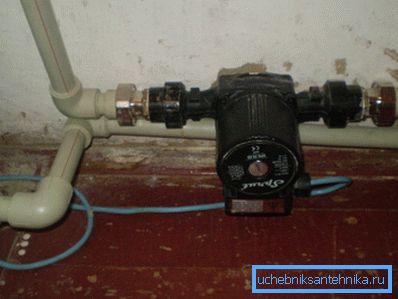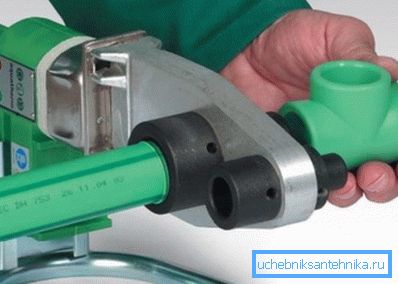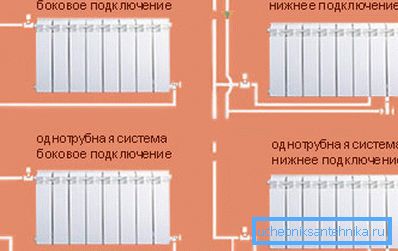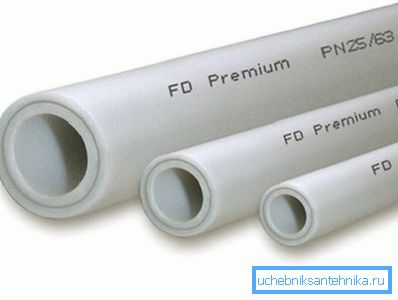We make installation of heating from polypropylene pipes
When choosing materials for an autonomous heating system, previously they preferred metal-plastic pipes because of their simple and quick installation. When polypropylene versions appeared on the market, it became clear that this type of products deserves close attention among consumers. First of all, the fact that in this case requires a minimum number of threaded connections.
You can carry out installation of heating from polypropylene pipes with your own hands or invite experts from the side.

Unlike metal products, propylene are not afraid of corrosion, so their lifespan without loss of performance is quite long. In addition, they can be embedded in a wall on a permanent basis, without fear of impulses.
Installation Features
Any heating system has its own criteria that allow it to function efficiently and safely. In this case, PP pipes can be installed for both conventional and autonomous heating. It is undesirable to install them only in systems where there is no control over temperature and pressure differences.
Tip: the maximum allowed heating of the coolant to 95? C. This is usually indicated on the polypropylene pipe itself.
Kinds
Most often used two options for autonomous heating:
| Natural | Such a system is also called "with the upper spill." It does not require a circulation pump, as its work is based on the natural movement of warm water upwards. It is effective in that it can operate without the use of electricity. |
| Forced | "Lower spill" with radial distributing of pipes. In this case, the system has the following advantages:
|

Advantages of polypropylene pipes
The product is considered to be practical material, so we consider its main advantages:
- long service life, it can exceed half a century. Polypropylene is environmentally friendly to humans and the surrounding atmosphere;
- does not rust, endures the negative impact of the external environment;
- PP pipe to the end of the term retains the smoothness of the inner surface and its quality, ensuring easy and fast circulation of water;
- installation is not complicated and is done in a short time;
- material reduces labor costs and saves money.

Requirements and installation
Below we will consider what is necessary to adhere during the installation of polypropylene pipes:
- Use items without damage and dirt.. During storage and transportation make sure that all rules and regulations are observed.
- Polypropylene pipe installation should be carried out at an ambient temperature of more than 5 ° C, This will enable you to make connections as efficiently and reliably as possible.
- During storage and transportation of polypropylene pipes should not be located next to an open fire, as well as they should be protected from mechanical stress.

- When crossing the PP pipelines, you must use a special fitting.
- Threaded connections must be industrial, it is forbidden to use parts with self-made threading.
- Sealing threaded pipe connections are allowed with a FUM tape or the like.

After selecting the pipes for heating and drawing up the scheme of works, you can proceed to installation:
- Install products with a slope to the side of the system section where the drain valve or tap will be located.
- It is advisable to break the pipeline into separate sections that can be blocked if necessary. This will improve the usability of the system and help avoid various emergency situations.
- When installing a pipeline of polypropylene, it is necessary to ensure the reliability of fasteners. In this case, a special system of holders is used, additionally preventing its sagging.
- If the riser needs to be divided into sections, it is allowed to mount a fixed support above and below the tee located at the branch point. In this case, subsidence of the pipeline can be avoided.
- It is necessary between the fixed supports to make compensation for the pipeline, which can be ensured by the following solution:
- change the track;
- install a loop compensator;
- to mount the U-shaped compensator.
- Carry out independent welding of polypropylene pipes in strict accordance with the requirements and rules that are attached to the installation equipment and devices. Control polypropylene compounds.
Tip: cut the products to the required length with a sharply sharpened tool, for example, a pipe cutter or special scissors for cutting pipes.
- Transitions during the installation of the hot piping should be carried out using a brass pressed-in insert, which has external and internal threads.

It is imperative that the installed pipeline be tested to identify and repair possible defects in the work:
- Use when testing with a deaeration device without installing water meters.
- It is necessary to fill the system from its lowest point.
- During the test, the length of the section should be up to 100 m.
- Increase the pressure gradually until you bring it to the limit.
- Do the checking within an hour. This gap is usually sufficient for the manifestation and detection of existing leaks.
Conclusion
After that, as the installation of heating from polypropylene pipes ended, they should be a single system, mounted according to the developed project. We recommend not to hurry, but to follow all the rules and instructions, otherwise the alteration will require additional time and expenses. The video in the article will help you find additional information on this topic.